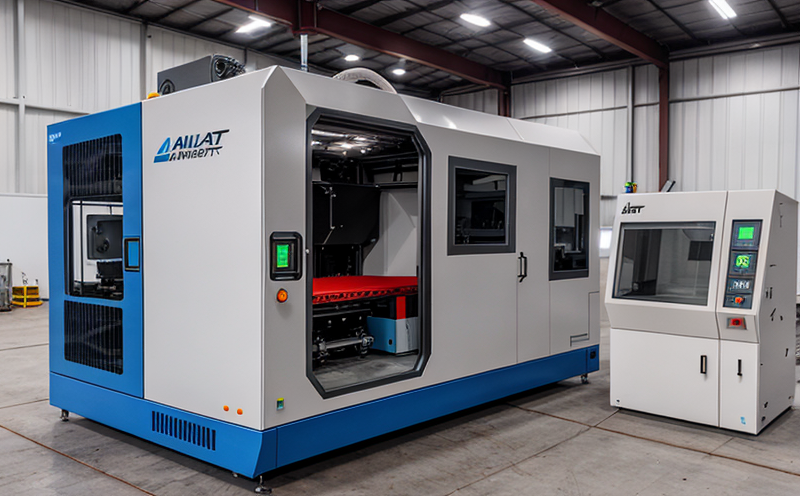ISO 52902 Geometric Accuracy Testing of Additively Manufactured Parts
The testing and certification of geometric accuracy in additively manufactured parts are critical to ensuring that products meet the highest standards of quality, reliability, and safety. ISO 52902 specifically addresses this need by providing a framework for assessing the geometric accuracy of parts produced through additive manufacturing (AM) processes.
The importance of such testing cannot be overstated in sectors like aerospace, automotive, medical devices, and any industry that demands precision in its components. Additive manufacturing offers numerous advantages, including reduced material waste, complex geometries, and intricate designs, but these benefits come with the challenge of ensuring the dimensional accuracy of parts.
ISO 52902 provides a detailed protocol for testing geometric features such as dimensions, form, position, orientation, and tolerances. This standard covers various AM processes including laser powder bed fusion (LPBF), electron beam melting (EBM), and direct metal laser sintering (DMLS). The process involves the use of specialized equipment capable of capturing precise measurements of parts.
The testing procedure typically starts with selecting appropriate reference points, which are critical for defining the geometric parameters to be tested. These points are chosen based on the design requirements and functional significance of the part. Once these points are identified, the next step is to prepare the specimen by cleaning it thoroughly to ensure accurate measurements.
The actual testing involves using coordinate measuring machines (CMMs) or laser scanners that can capture detailed three-dimensional data. The equipment must be calibrated according to ISO standards to ensure accuracy and reliability of the results. After acquiring the measurement data, statistical analysis is performed to evaluate conformity with specified tolerances defined in the part design.
The use of advanced software tools allows for the visualization of deviations from nominal geometry, making it easier to identify areas that may require further inspection or rework. This level of detail ensures that manufacturers can make informed decisions about process adjustments and quality assurance measures.
By adhering to ISO 52902, companies not only enhance their product quality but also demonstrate compliance with global standards, thereby building trust among customers and stakeholders. This is particularly important in highly regulated industries where non-conformance could lead to severe consequences such as recalls or legal action.
In conclusion, implementing ISO 52902 geometric accuracy testing ensures that additively manufactured parts meet the stringent requirements necessary for safety and performance. It provides a robust framework for quality control and continuous improvement in manufacturing processes.
Applied Standards
| Standard | Description |
|---|---|
| ISO 52902 | This standard provides the requirements for testing the geometric accuracy of parts manufactured using additive manufacturing processes. |
| ASTM F42 | A collection of standards for additive manufacturing, which includes specific practices related to quality assurance and control. |
The application of these standards ensures consistency in testing methods across different organizations and jurisdictions. By adhering to internationally recognized guidelines, manufacturers can ensure that their products are evaluated uniformly against established criteria.
Scope and Methodology
| Aspect | Description |
|---|---|
| Preparation of Specimen | Cleaning the specimen to remove any contaminants that could affect measurement accuracy. |
| Measurement Techniques | The use of CMMs or laser scanners for capturing precise three-dimensional data. |
| Data Analysis | Statistical analysis of the collected measurements against specified tolerances to determine compliance. |
The methodology outlined in ISO 52902 ensures that all aspects of geometric accuracy are thoroughly examined, providing a comprehensive assessment of part quality. This approach helps manufacturers identify potential issues early on, allowing for corrective actions before parts reach the final stage of production.
Eurolab Advantages
At Eurolab, we pride ourselves on offering state-of-the-art facilities and experienced personnel to meet the stringent requirements set forth by ISO 52902. Our laboratory is equipped with cutting-edge equipment capable of performing precise measurements necessary for this type of testing.
We employ highly trained engineers who specialize in additive manufacturing processes and have extensive experience in quality assurance techniques. This ensures that our clients receive accurate, reliable test results that meet international standards.
Our commitment to excellence extends beyond just providing technical expertise; we also offer tailored solutions based on individual client needs. Whether you require routine testing or one-off assessments, our team is dedicated to delivering high-quality service with minimal downtime.
In addition to our technical capabilities, Eurolab maintains strong relationships with industry leaders and regulatory bodies, ensuring that our clients stay up-to-date with the latest developments in additive manufacturing standards.





